There’s something captivating about a Degas painting—perhaps it’s the quiet intensity of a dancer mid-rehearsal, the dramatic sweep of a racehorse in motion, or the hush of a backstage moment. Edgar Degas, one of France’s most fascinating artists, had a gift for capturing movement and stillness in perfect harmony.
Edgar Degas was born in Paris in 1834, into a wealthy banking family. Though he began studying law, his heart wasn’t in it. Drawn instead to the arts, he left the legal world behind and trained at the École des Beaux-Arts, immersing himself in classical techniques and the works of the Old Masters.
In the 1860s, Degas began exploring modern life as subject matter. He sketched dancers at the Paris Opéra, racehorses at Longchamp, and women in everyday routines. His work blended academic precision with an unflinching eye for truth.
Though often grouped with the Impressionists, Degas disliked the term. He preferred the label “realist”—but his unique vision and techniques earned him a lasting place within the movement.
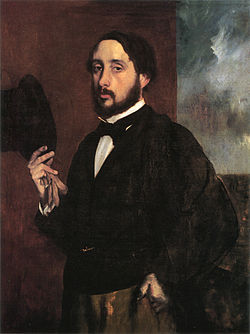
French often uses the reflexive verb se préparer when describing preparation or getting ready:
Did you know? Degas often used pastels, a medium considered secondary at the time. Today, many of his pastel works are among his most celebrated.
Degas’s work is known for its cropped compositions, unusual angles, and quiet intimacy. Whether portraying ballerinas, laundresses, or jockeys, he brought a psychological depth and raw elegance that set his work apart.
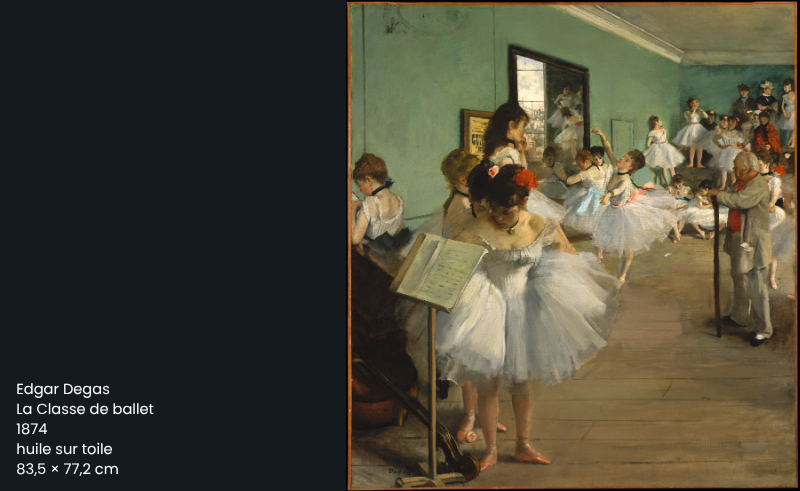
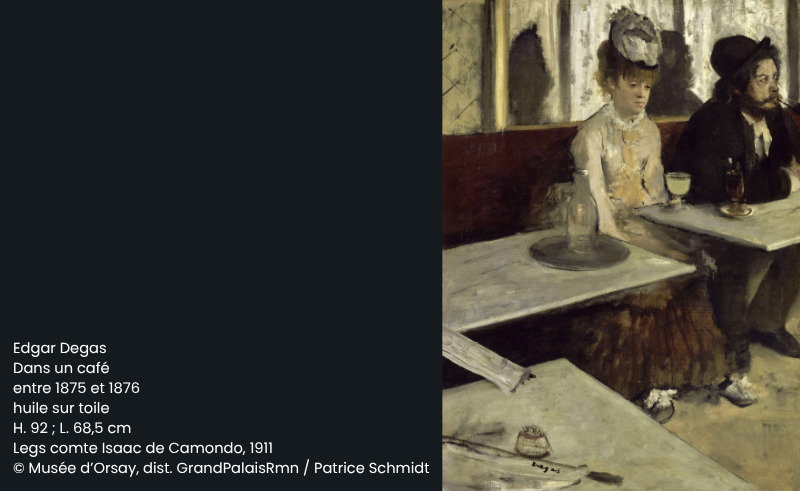
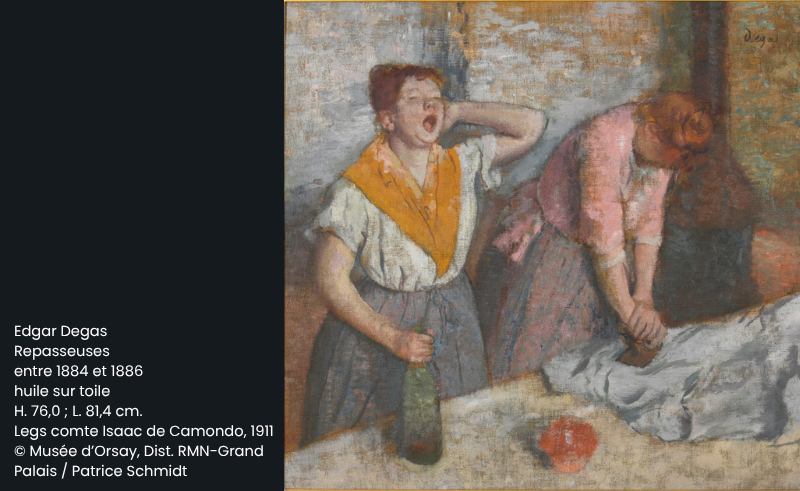
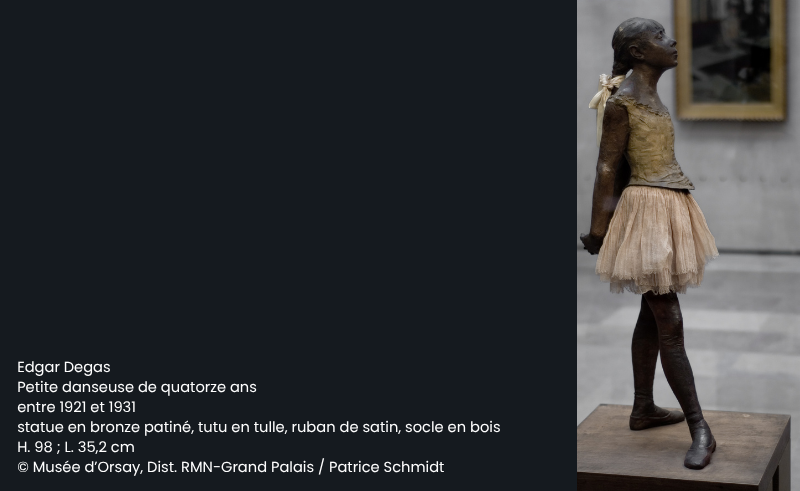
La Classe de ballet (The Dance Class)
1874
One of Degas’s most iconic paintings, this scene of a ballet lesson offers a glimpse into the rigour and elegance of a dancer’s world. You can see it at the Metropolitan Museum of Art in New York.
L'Absinthe / Dans un café (The Absinthe Drinker)
1875-76
A haunting portrayal of two solitary figures in a Parisian café, this painting shows a more sombre side of modern life. It resides in the Musée d'Orsay in Paris.
Les Repasseuses (The Laundresses)
1884–86
This pastel-and-oil painting captures the fatigue and rhythm of two women ironing. Realism and compassion meet in each brushstroke. You can find it at the Musée d'Orsay.
Petite danseuse de quatorze ans (The Little Fourteen-Year-Old Dancer)
1880
A striking bronze sculpture of a young ballerina, complete with real fabric and a ribboned tutu. It shocked audiences at the time for its realism—and still stirs debate today. See it at the National Gallery of Art in Washington, D.C.
French vocabulary:
Though deeply social in his youth, Degas became increasingly reclusive later in life, especially as his eyesight deteriorated. Yet he continued to create—turning to sculpture and monotype as his vision faded.
He once said, “Art is not what you see, but what you make others see.” His work invites us into fleeting moments: backstage, in motion, in silence.
Degas was both observer and interpreter—his art a bridge between the seen and the felt.
Grammar tip:
In French, words like “la danse” (dance) and “la sculpture” (sculpture) are feminine nouns. Articles like “la” must agree with the gender. Don’t forget to match adjectives too: belle sculpture (beautiful sculpture).
Many of Degas’s most famous works are housed in Paris’s Musée d'Orsay, but his influence reaches far and wide. You can also explore his art through institutions like the Metropolitan Museum of Art, the National Gallery of Art, and Google Arts & Culture.